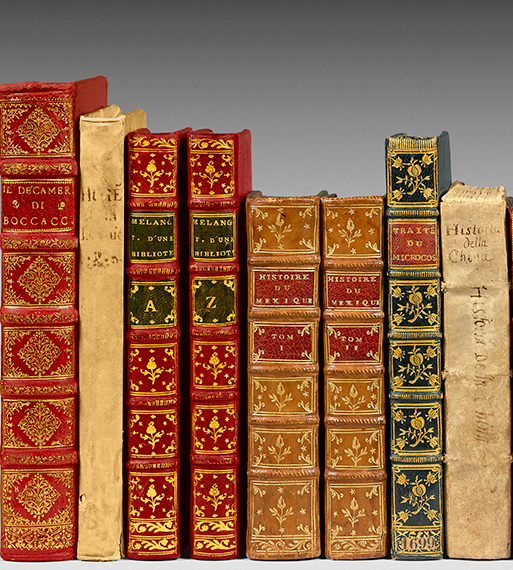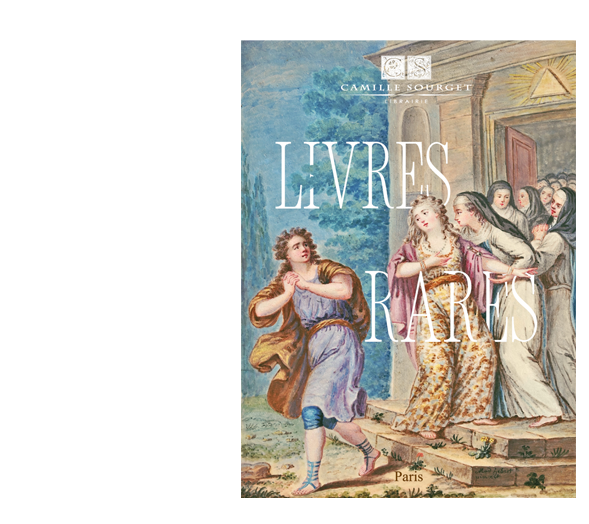Paris, at Lamy, Bookseller, 1781.
176 x 100 mm.
Rare and very “sought-after” (Tchemerzine) collective definitive first edition of the Contes de Perrault, also the first to be as complete, “including, in addition to the previous one from 1742, Donkey Skin, in prose and verse, Griselidis and The Ridiculous Wishes”(Brunet, IV, 508).
Precious large format copy on Holland paper, here bound in two volumes.
“Famous edition” (Deschamps – Supplément à Brunet, II, 207).
These tales define Charles Perrault as the creator of a literary genre, unknown before him, the one of the fairy tales. Written for children, those stories enchanted the contemporaries and were soon ranked as a masterpiece.
Charles Nodier (1844) will be the first to detect “one of the most delightful productions of the French prose » and will place it amongst the greatest French literary works. The glory came during the 19th and 20th centuries and thanks to the constant admiration Perrault’s work inspires in the United States.
The number of comments and studies dedicated to him, the large number of republications, illustrations or film adaptations demonstrate the constant success and the huge international audience that places this work amongst the greatest universal literature works.
Charles Perrault (1628-1703) belongs to a family of great state clerk from the Parliament of Paris. As such, and like many of its members, it is strongly tinged with Jansenism. After studying law and some attempts at political versification at the time of the Fronde, he joined his older brother, a powerful Receiver General for finance in Paris. He joined the Colbert clan from 1663 and took advantage of his rise to organize with his brother Claude – the doctor – the superintendence of Buildings. Nominated for membership of the Académie Française in 1671, he found himself in charge of Colbert’s cultural policy, distributing prebends and graces. Perrault was dismissed by Louvois in 1683 and devoted himself to his work, which led to the famous outbreak of the Quarrel of the Ancients and the Moderns. He became the hero of the Moderns during the famous public reading at the Academy of his Siècle de Louis XIV in 1687 and fell out with Racine and Boileau.
One of the most precious books of the 18th century. Over the last half-century, only one other copy on large paper also bound by Derome le jeune in morocco with dentelle – without mosaic patterns – appeared on the market.
With shorter margins (height of 170 mm compared to 176 mm here), it was sold FF 180 000 in Paris in June 1982 (≈ € 30 000 38 years ago) and sold for € 70 000 (FF 450 000) on 1st December 1997, by Maître Buffetaud, 23 years ago.
From the library of the countess de Behague.

